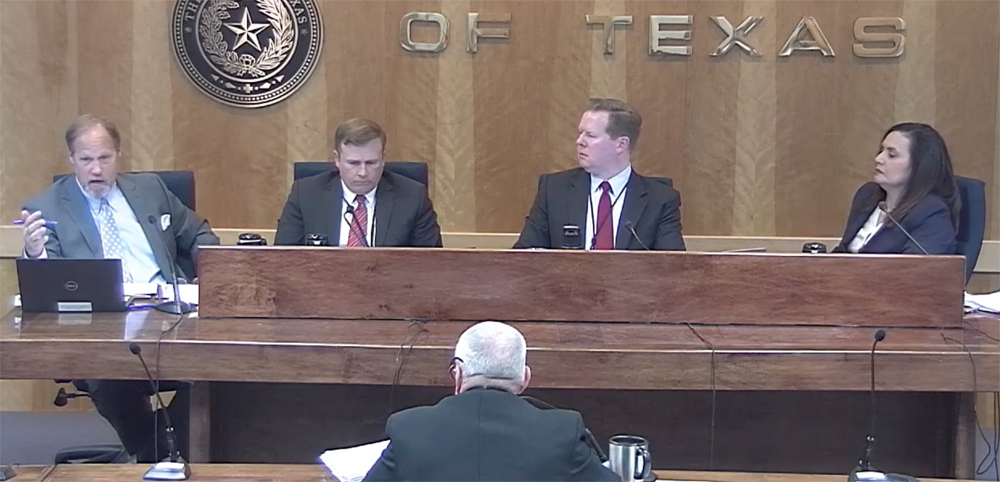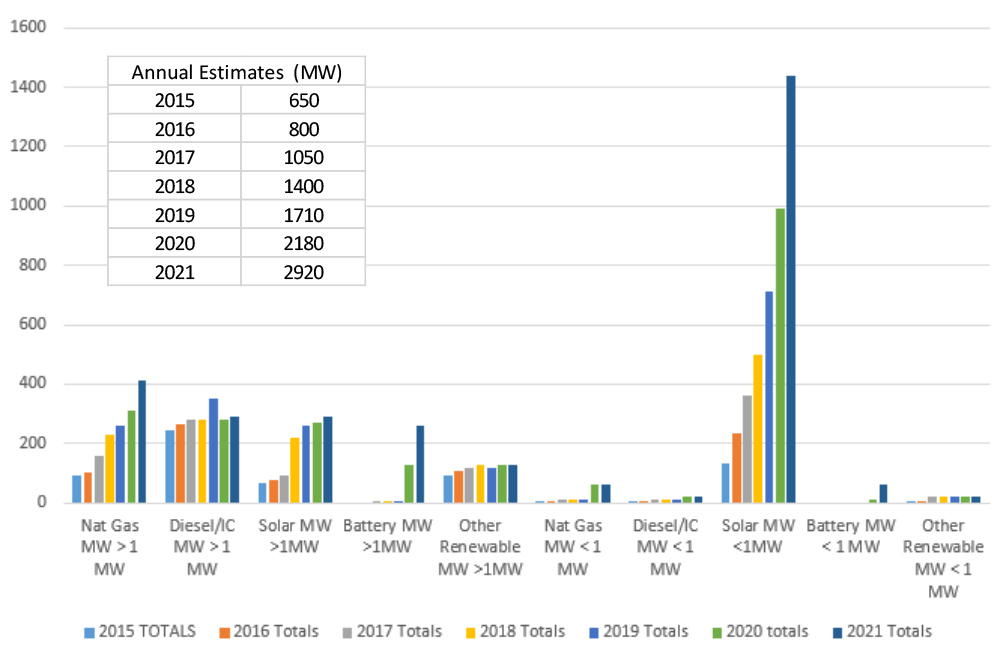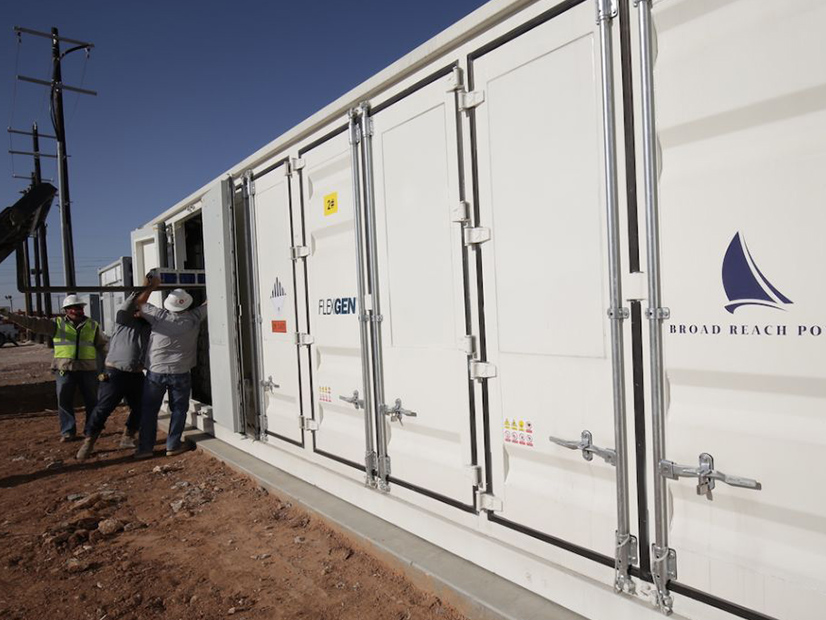Texas regulators and energy storage developers can see the problem coming. What with some 67 GW of energy storage, either standalone or co-located with solar, sitting in ERCOT’s interconnection queue, it’s not hard to miss.
“This is a massive number of new megawatts that could fundamentally change how our system works in ERCOT,” Public Utility Commissioner Jimmy Glotfelty told his colleagues in a March 30 memo.
Unfortunately, Glotfelty said, it’s not known how many more of those battery storage megawatts are trying to interconnect to distribution systems managed by ERCOT’s utilities, municipalities and cooperatives. He said the commission needs to track and develop a process to handle that process.
“The lack of visibility into these distribution system assets is an oversight,” he wrote.

The developers agree. In early March they asked the PUC to “expeditiously” open a project that would determine the “appropriate policies necessary for nondiscriminatory interconnection” and operation of distribution-voltage battery energy storage systems (BESS).
They asked for guidance necessary “for storage companies and utilities to more efficiently move ahead” with investments at the distribution level that can deliver resilience, innovation and affordability.
“Such guidance will also allow for the removal of barriers to interconnection of distributed BESS. which will incentivize additional investment in these reliability-promoting resources throughout ERCOT,” the developers said.
“We built the grid for a certain type of resources. Now, we’re having to figure out these processes as they apply to new technologies,” Caitlin Smith, senior regulatory director for storage developer Jupiter Power, told RTO Insider.
The company recently commercialized its first transmission-connected project, a 100-MW storage facility in West Texas with 200 MWh of duration capacity.
Smith and Jupiter were signatories, along with Hunt Energy Network and Broad Reach Power, in the March filing requesting the commission develop “clear and consistent” interconnection policies and timelines and determine “appropriate cost-recovery mechanisms.”
“Without clear guidance in rules, the cost of service to batteries connected at distribution voltage is being allocated directly to the battery, in a way that it isn’t allocated to other generators,” Smith said.
Referencing the developers’ request, Glotfelty brought the issue to the PUC’s March 31 open meeting. He reminded the commissioners that in the mid-1990s, previous state regulators developed standardized transmission interconnection procedures and said that doing the same for distribution-level resources is “just a natural progression of how this system is moving.”
“We’re gaining resiliency; we’re gaining resource-adequacy benefits from these interconnections; and thus we can consider different levels of costs and cost allocation,” Commissioner Will McAdams said during the meeting. “I certainly see benefits from this project. I think we’ll have a lot of insightful comments as a part of it. It’ll serve as a repository for questions … so that theoretically, we could take actions to consider policy refinements.”
“We’re ahead of the curve, before this becomes a big rush,” Glotfelty said. “I think if we don’t do this, we’re going to solve these issues on a utility-by-utility basis, on a filing-by-filing basis.”

Smith said she expects the project to become a rulemaking that would likely need to be completed before 2023, as the PUC usually pauses rulemakings during legislative session. It also presents an opportunity to implement Senate Bill 1281, which outlines criteria for reliability transmission projects.
Noting that almost 3 GW of distributed generation and more than 1 GW of energy storage is already online in ERCOT, Smith said, “It’s time to address the barriers to using these resources for a reliable and resilient grid in a holistic, instead of piecemeal, way.”
PUC Adopts Middle-mile Broadband Rule
The PUC last week also adopted a rule that allows electric utilities to lease their excess fiber capacity so that internet service providers (ISPs) can offer broadband to the state’s unserved and underserved areas (52845).
The “middle-mile broadband” rule contains several ratepayer, consumer and private-property owner protections. Electric utilities cannot pass any costs related to middle-mile broadband service to their ratepayers, and they cannot deliver internet service directly to end-use customers on a retail basis.
Commissioner Lori Cobos called the rule a “great step forward” for Texas and especially important for the state’s rural communities.
“This will allow for more broadband expansion into those areas. We all discovered during the pandemic how important it is to have access to broadband service for a variety of very important services out there.”
The commission doesn’t regulate broadband service but said the rule will help electric utilities partner with ISPs to expand broadband access to Texans. It is a result of a bill passed last year by the 87th Texas Legislature.
Private-property owners who have granted easements to electric utilities can protest the easement’s use for middle-mile broadband service.
The rule defines an unserved area as one or more census blocks in which 80% or more of end-user addresses have no access to broadband service or lack access to reliable broadband service as determined using Federal Communications Commission mapping criteria, if available.
An underserved areas is defined as one or more unserved census blocks in which 80% or more of end-user addresses in each block lack access to broadband service, with a download speed not less than 100 Mpbs and an upload speed not less than 20 Mpbs, or lack access to reliable broadband service with those speeds as determined using FCC mapping criteria, if available.
Electric utilities that contract with ISPs for middle-mile broadband service must submit implementation plans to the PUC for review and approval.
Search Narrows for Market Redesign Consultant
In other actions last week, the commission delegated to its executive director, Thomas Gleeson, the authority to award, negotiate and execute contracts for consulting services related to the second phase of the ERCOT market’s redesign (53237).
The PUC issued a request for proposals for expertise as it implements a market design “blueprint” intended to “ensure sufficient dispatchable generation resources” that meet ERCOT’s reliability needs. The consultant would be responsible for recommending implementation strategies and support the commission and staff in developing business requirements for those strategies.



